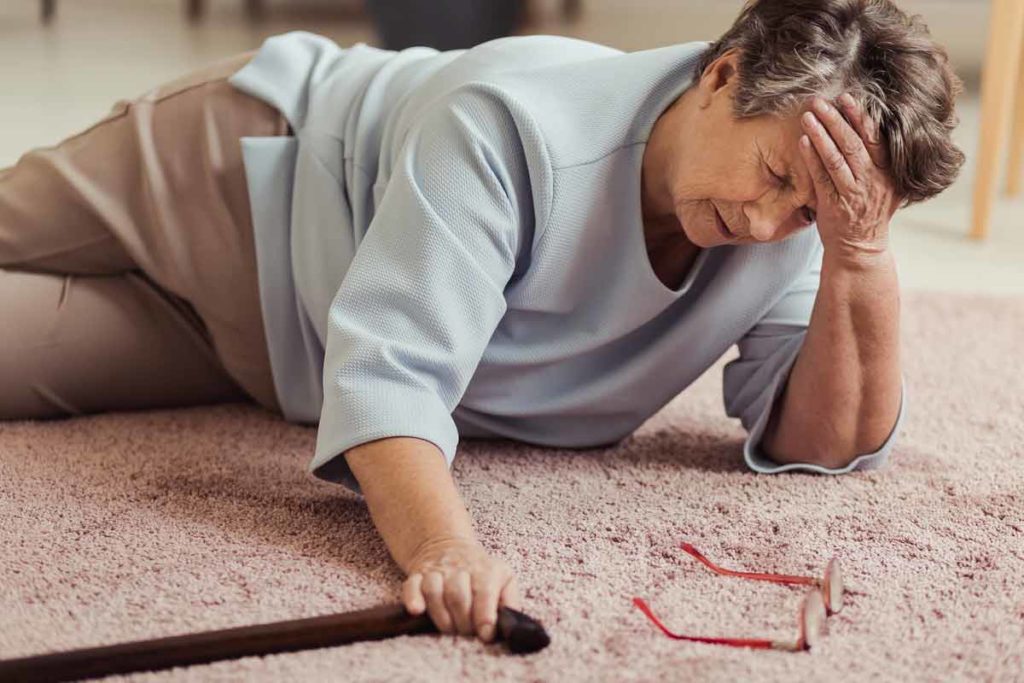According to an AgingInPlace.org survey of 1,000 medical alert system users, more than 90% responded that a medical alert system has helped them feel more confident. Once a stigmatized accessory, (thanks to the, “I’ve fallen and cant get up!” commercials of the late ‘80s and early ‘90s), medical alert systems are now recognized as a useful tool in our pursuit to age in place.
How To Choose A Medical Alert System 2023
For Carol Walton, whose 94-year-old mother lives alone, a medical alert system has allowed her mother to maintain independence and given their family peace of mind. Many older adults have an elevated quality of life when they are able to, and want to, live independently at home. At the same time, families and caregivers want the comfort of knowing their loved ones are staying safe and healthy.
“We are grateful that this system helps my mom stay in her home and out of an assisted living facility—and so is she.”
Carol Walton
What Is a Medical Alert System?
A medical alert system, also called a personal emergency response system (PERS), is an in-home or on-the-go wearable device that allows you to contact emergency services or loved ones in the event of a fall or other medical incident. You can also use it for non-medical emergencies, such as a home invasion or becoming lost.
These systems include ‘help’ buttons that are positioned at strategic locations around the home and wearable devices, such as pendants, bracelets, or smartwatches. There are different types of medical alert systems, so if you have decided to incorporate one into your life or a loved one’s, it’s important to consider which type will work best for you.
In-Home Medical Alert Systems
An in-home medical alert system is ideal for older adults who opt to age in place but rarely leave the house alone. This way you have the comfort of knowing that contact with loved ones or emergency personnel is quickly available in an emergency when you or your loved one is home alone.
In-home systems always include a stationary base console, which connects via a landline phone jack or cellular signal. This is the only option for those who don’t have cellular service in their home. The base console has a limited coverage range, which is something to be aware of if you have a larger home. You can only connect to a monitoring center or loved one if you are within the designated range of your console. This can be as much as 1,400 feet for some systems, but it can be as little as 200 feet for others.
Help buttons can be situated throughout the home and worn on the body so that one is always within reach. A help call can be activated simply by pushing one of the buttons, or, in more sophisticated models, by voicing a call for help or through automatic fall detection. Activating a help call will connect you to a call center, most of which are available around the clock, or to a loved one—whichever is your designated preference. You connect with them through the base console and can decide the best course of action.
Mobile Medical Alert Systems
A mobile medical alert device is a good choice to consider if you’re active and often leave the house alone. Even mentally agile and mobile older adults may opt to use a mobile alert device because they live alone or simply want additional support as they age. Unlike an in-home system that has a maximum range, a mobile medical alert system connects via cellular service (and sometimes Wi-Fi), so it will work anywhere there is a cellular (or Wi-Fi) connection. In addition, most help buttons are equipped with GPS tracking abilities, allowing the operator or your loved ones to view your location even if you can’t identify it yourself.
Who Should Use a Medical Alert System?

A medical alert system is ideal for older adults who may find themselves alone and in need of help. According to Christopher Norman, a board-certified geriatric nurse practitioner and holistic nurse, a history of falling for any reason is a predictor of future falls. Other reasons may include older adults who are:
- Living alone or staying alone for long periods of time without access to a caregiver nearby.
- Prone to falling due to a medical condition, mobility difficulties, or medication. This may include those with Alzheimer’s Disease, other forms of dementia, Parkinson’s disease, multiple sclerosis, diabetes, low blood pressure, heart disease, seizures, vertigo, or any other condition that affects balance, cognitions, or mobility.
- Already experienced a stroke or fall.
- Recovering at home after surgery.
- Frequently on the go and difficult to get a hold of or concerned about calling for help during an emergency.
- Interested in monitoring abilities with GPS tracking.
- Unable to give information like medical history or current medications to emergency responders.
“I think medical alert systems have great value, especially if the patient is unable to give us past medical history or current medications,” said Mitchell Harr, a lieutenant with Aurora Fire Rescue in Aurora, Colo. Not only can medical alert systems call 911 for you, they can provide the operator with preliminary health information that you would have supplied to them when you first got your system. Harr noted that it’s important to keep this information up-to-date with the provider of your system.
The sooner an older adult receives care after a medical emergency, the better their chances are for an optimal outcome. According to our survey, more than 89% of respondents experience fear that they will fall. Studies show that PERS users have a lower rate of hospital readmissions and decreased levels of fear, stress, and anxiety about their well-being.
Medical alert systems are not a replacement for caretakers, especially for people with mobility or cognitive challenges. However, these devices do provide users with a lot more independence and freedom, which may help improve their overall quality of life.
A Medical Alert System Journey
Carol Walton’s 94-year-old mother had a stroke several years ago and later fell and broke her hip, leaving her to lie on the floor of her home for over 10 hours. While she was never a fan of using a medical alert system, after those two events, and at the insistence of the home health care company that cared for her after her hip injury, she now uses one regularly. Walton’s mother, who is a “low-tech” person, had a simple system installed that connects through her landline and includes a basic console next to her bed and four help buttons strategically placed throughout her house. She also wears a pendant that includes automatic fall detection. Overall, the family gets a much greater sense of calm and security knowing that Carol’s mom has the system in her house. The in-home medical alert system was a fairly simple and affordable home modification that allows her mom to stay in her home.
How to Choose a Medical Alert System

A medical alert system only works if you wear it, so consider which device will best meet the needs of your specific situation, making it more likely that you will regularly wear and use it.
Mobile vs. In-Home
This will be an important initial consideration when selecting the right system for you. If you don’t have cellular service in your home, only have a land-line, and tend to stay home alone most of the time, an in-home system is probably right for you. If, on the other hand, you are active and mobile and regularly alone outside of the home, a mobile system will probably make the most sense. Some companies offer packages that bundle at-home and mobile devices for a discount. Some older adults will opt for a mobile system only if they feel they don’t need protection at home. This may be the case if you live with another person and only want access to a help button when you are out and about.
Monitored vs. Unmonitored
Medical alert systems can be monitored or unmonitored. A monitored system requires a monthly fee which gives you access to a 24/7/365 monitoring center staffed with dispatchers waiting to take your call. This human interaction can be invaluable since it allows you to decide what to do in each situation. The monthly fee sometimes includes the costs of leasing the devices while using the monitoring services.
To ensure uninterrupted monitoring, large medical alert service companies often have two monitoring centers in case of power outages or other issues at one center. Be sure to inquire about this and whether the monitoring centers used are Five Diamond Certified by The Monitoring Association, which is a trade association representing the professional monitoring industry and confirms that agents have undergone advanced training.

With a monitored system, the monitoring company will keep medical information about you on file (such as past medical history and current medications) and provide it to emergency personnel in the event that they’re called. Well-trained monitoring service operators will stay on the line until emergency responders arrive and make sure they have this information even if you’re unable to provide it to them yourself.
However, if you’re using an unmonitored medical alert system, you control who is called based on the contacts you program into the device.
“Having a network of friends and family is so important for crisis prevention,” said Norman. “A medical alert system can be a great addition to a comprehensive plan to help someone maintain safety in-home.” This may include friends, neighbors, family members, caregivers, community members, or emergency services.
With an unmonitored system, you don’t have access to a staffed call center. This system style generally requires an upfront cost for the equipment, which you own outright. While you save money on monthly expenses, unmonitored medical alert systems are not for everyone. Since you don’t have the opportunity to talk to a call center to determine what help you need, you may incur costly medical bills if emergency services are sent to you immediately. And even though a list of contacts can be automatically dialed, there’s no guarantee they’ll answer, possibly delaying help when you need it the most. Some people opt to have friends or family contacted first, then if there’s no response, emergency services are contacted and dispatched.
“Taking a little time each month to review who is coming over when, or who might be making a phone call to the older adult loved one, who is scheduled to take the loved one out to lunch, dinner, a park, etc, can be fulfilling for everyone involved and also be a way to catch accidents before they happen, or prevent an accident from becoming dire,” said Norman. “In the case of a fall, for example, the longer a person spends on the floor, the more complicated the health issues can be as a result of that fall—unable to get up for 10 minutes vs. unable to get up for a few hours or more can literally be the difference of life and death in some situations.”
Connection Type and Response Time
While at home, most medical alert companies give you a choice between a landline or cellular connection for the base station. If you have spotty cell service, consider going with a landline system. All mobile systems connect to the call center via a cellular network, generally AT&T, Verizon, or T-Mobile. The medical alert company provides this service.
Response time refers to the time it takes for an operator to pick up your call after you activate the help button. While each company has its own guaranteed time, this can generally range from 12–60 seconds, with most responding within 20–30 seconds. However, several factors can impact this time, making it longer or shorter, such as the time of day the call is placed, the strength of the cellular connection, and the number of staffed operators available. Some systems are able to use Wi-Fi when cell service is weak, making them more reliable. Take some time to read online customer reviews that discuss response times, then compare them to the advertised response times. And be aware how quickly emergency services can reach your home. “There is a ton of variability in how fast help can physically arrive in urban vs. rural environments. It’s an important conversation to have when thinking about what happens if in the event of an emergency situation,” said Norman.
Cost
- Equipment fees: All unmonitored medical alert systems have an equipment fee, while only some monitored systems have one. The difference with an unmonitored system is you’re required to purchase the device and manage it yourself. With a monitored system, you will lease the equipment while paying a monthly call center fee. Then, when you’re ready to cancel the service, you return the equipment. Some monitored medical alert companies have devices that require an upfront fee, such as the Medical Guardian Mini Guardian or the Bay Alarm Medical SOS smartwatch.
- Monthly fees: Monthly fees only apply to monitored medical alert systems. You will see this fee during the checkout process on the medical alert company website. Pay special attention to the difference between the month-to-month cost compared to paying quarterly, semiannually, or annually. Most companies offer savings if you pay for multiple months upfront. This fee covers access to the emergency response call center. It also includes equipment fees if you lease the base station and wearable device. Be cautious of any long-term contracts that lock you into paying a monthly fee for a designated amount of time.
- Initiation fees: Some medical alert companies charge an initiation or activation fee. In general, this fee can range from $50–$200. If you see an installation fee, ask if it’s a required cost. If the price is associated with installation services, you may be able to reduce or eliminate the charge by setting up the system yourself. Sometimes setup is as easy as plugging the unit into an electrical outlet and pressing the help button to test it.
- Add-on fees: These fees can increase your overall monthly costs significantly, so pay close attention to the price of any features not included with the standard monthly fee. This may consist of automatic fall detection, medication reminders, access to a caregiver app, jewelry-type pendants, wall mount buttons, extra help buttons, and more. While the additional cost associated with add-ons might not seem significant, add-ons can end up adding an extra $20 or more per month.
- Plan discounts: Many medical alert companies offer a discount on the monitoring center fee if you sign up for a quarterly, semiannual, or annual plan. Look at all the price points and decide for yourself if the monthly savings are worth being locked into a set number of months. Companies may also offer discounts for military veterans, AAA, or other affiliations.
Warranty and Trial Periods
- Return policy: It’s important to go with a medical alert company with a clearly stated return policy—and you’ll want to know if the policy allows you to return the equipment and cancel the services with no extra charges. You will likely be required to pay shipping charges to return the equipment. Also, ask if the company refunds prorated fees for quarterly, semiannual, or annual plans, and also for the policy if you cancel before the prepaid period is up.
- Trial periods and money-back guarantees: Some top medical alert companies offer a risk-free trial period between 14–30 days. Ask the customer service department if you don’t see a trial period advertised. A trial period gives you the freedom to try the system, and if you don’t like it, you can return the equipment and cancel the subscription for a full refund if you do so before the trial period ends.
- Warranty: Always ask about the warranty on the base station, charging stations, and wearable help buttons, especially if you’re using an unmonitored system that requires you to purchase all the equipment up front. If you have a monitored system, the company may cover certain services during your service time, but it’s important to still ask about any out-of-pocket expenses you could incur while using the system. Some medical alert companies offer an extended warranty or protection plan for an additional monthly fee.
Company Reputation
Taking time to evaluate the reputation of a medical alert company is an important step in choosing a system. The key to a successful research experience is to read a mix of reviews from different sites. For example, read the customer comments on the company’s website, but also cross-reference them with reviews on sites not affiliated with the medical alert company. Here are some good places to start:
Key Features
The following features are inherent in all medical alert systems and should be compared.
- Battery life: Many mobile medical alert devices require frequent charging. Most companies advertise a battery life that ranges from 18 hours to several days, depending on use. When it comes to in-home systems, the biggest concern is a power outage or experiencing an issue with the charger. In these cases, having a backup battery is essential. Many in-home device backup batteries can last up to 72 hours.
- Water resistance: Many medical alert devices, and more specifically, the wearable help button, are either water-resistant or waterproof, allowing you to wear them while bathing or showering. A water-resistant help button can withstand a certain amount of spray, but can’t be submerged in water for an extended period of time. On the other hand, a waterproof device can withstand more water exposure than its water-resistant counterpart. You’ll want to know the maximum depth and time limitations before submerging a waterproof medical alert device in water.
- Call button accessibility: The emergency call button, or help button, is what you will press to connect to a monitored system’s call center or emergency services—or a designated caregiver through an unmonitored system. This button is generally large enough to see and activate. However, it may be smaller on smartwatch-style devices, which is something to be aware of if dexterity is an issue. The help button is front and center on a base station, neck pendant device, or wristband-style device.
- Style and comfort: For some people, style is a non-negotiable feature. Medical alert devices are generally worn around your neck, on your wrist, clipped to a belt buckle, or carried in a purse or bag. Newer smartwatch-style devices are discreet, stylish, and often contain extras like fitness and sleep trackers. Some pendants are large, which stops many people from using a medical alert system altogether. The good news is most companies now sell a smaller version of their main pendants. Plus, some help buttons come with the option of adding a jewelry clip to them, giving them the appearance of a necklace.
Optional Features
There are a number of optional features which may ultimately determine which system you choose. Make note of which features are a non-negotiable priority to you.
- Automatic fall detection: It’s no surprise that the AgingInPlace.org survey found the majority of respondents identified fall detection as the most important feature when considering purchasing a medical alert system. After all, falls are a main cause of morbidity and disability in the older population. More than one-third of persons 65 years of age or older fall each year, and in half of these cases the falls are recurrent.
The risk doubles or triples in the presence of cognitive impairment or history of previous falls. According to the National Institute on Aging, a fear of falling is more prevalent in people as they age, leading to a decrease in participation in activities like walking or attending social functions. Fall detection is an important safety feature that can be added to most medical alert systems, but you’ll want to be aware what types of falls can be detected.
A sudden fall from a standing position has a higher velocity than a fall from a sitting position, like out of a chair, noted Norman. “Both instances may result in a person being unable to get up off the floor, but the higher velocity fall is more likely to be detected by some devices.”
Some companies require an additional monthly fee of $5–$10, while others include the cost in the monthly charge. This feature automatically detects a fall based on motion and contacts the response center even if you can’t activate the help button yourself.
- Two-way communication: Almost all medical alert systems have two-way communication, allowing you to speak with the response center or your designated caregivers after a help alert is activated through the base station or your wearable device. This allows you to verbally let them know if you indeed need help (or it was a false alarm) and what type of help you need.
- Voice activation: Some systems allow for you to activate a call for help with only your voice (rather than counting on automatic fall detection or pushing a button). This is great for anyone worried about mobility and hand dexterity, and who may be less physically able to push a button.
- GPS tracking: GPS tracking and location services enable a loved one, call center operator, or emergency responder to pinpoint your exact location in case of emergency, even if you can’t communicate your location yourself. This feature is generally available on a mobile medical alert system that uses cellular service to connect, but you should always double check before settling on a system.
- Mobile app: Several medical alert companies now offer a mobile app or caregiver app as part of the system. These apps allow caregivers and family members to stay connected with you, with some even offering advanced location tracking. Many also include a feature that allows you to chat with a care partner. The app is often included with the monthly subscription, or you can add it for a fee.
- Lockbox: Some medical alert systems come with the option to add a lockbox. This may be included in the price, cost extra each month, or be charged as a one-time fee. A medical alert lockbox stores a house key, allowing emergency personnel easy access. It’s placed somewhere on your property, either on an outdoor handle, railing, fence post, or other location that is accessible to emergency personnel. The lockbox is opened with a combination or code that the monitoring center can provide in an emergency.
“Another tool that is priceless regarding elderly people living alone is a lockbox. We love these,” said Harr.
- Medication and appointment reminders: Medication and appointment reminders are special add-on features that you program through a user portal or app. This is an excellent tool for older adults who may be forgetful and benefit from these types of reminders. However, you’ll want to make sure to update these regularly after health care appointments, hospitalizations, and at least once a month.
- Environmental monitoring: This feature includes a sensor in the base unit that can detect life-threatening changes in a person’s home environment, such as smoke, carbon monoxide, or dangerous temperatures. If the sensor picks these up, the medical alert device will automatically contact the call center and emergency services will be dispatched. Some mobile devices can give information about outdoor temperature and air quality as well.
- Step/activity tracker: An active older adult interested in tracking their activity levels will appreciate a medical alert system with a step/activity tracker. This can help motivate you to hit your activity level goals, an important component to overall well-being for an aging adult. This feature is generally only available on medical alert smartwatches. They may also include a heart rate monitoring feature.
- Wellness checks: This feature provides daily, biweekly, or weekly check-ins with a care professional from the medical alert company. Most people who add wellness checks opt for a daily check-in. If the care professional can’t make contact, they will proactively respond to the situation based on your personalized care instructions. Wellness checks are only offered by a few medical alert companies. Norman noted that you should look into the kind of access these companies have with your existing health care provider network.
“Some programs employ RNs that can offer great advice in lots of situations, and some programs employ health care providers with prescriptive privilege,” said Norman. “While well-intentioned, proceed with caution! If these providers don’t have access to your current medication list—and if you don’t know all your medications and what you’re taking them for—this provider that doesn’t know you that well might prescribe something that could interact negatively with some other medication you’re taking, creating a dangerous situation.”
Key Takeaways
The right medical alert system gives you the freedom to be more independent since you have a safety net of knowing that someone can help if you need it. And in some cases, it may improve the chances for an optimal outcome if you’re able to get appropriate care soon after a medical emergency occurs. Medical alert systems are not a replacement for caregivers, especially if you have mobility or cognitive challenges that may require more assistance. In these situations, a medical alert device can supplement the support you may be receiving from a caregiver at home or from an assisted living facility.
WRITTEN BY
Lauren Sherman, M.S., is a health content writer with a master's degree in human genetics from the University of Colorado Anschutz Medical Center, laboratory experience at National Jewish Health, and clinical experience at Children’s Hospital Colorado. She has extensively researched products to help those wanting to age in place such as medical alert systems, walk-in tubs, adjustable beds, and oxygen concentrators.
MEDICALLY REVIEWED BY
Christopher is a Board-Certified Geriatric Nurse Practitioner and Holistic Nurse. As a Nurse’s Aide, Registered Nurse and now Nurse Practitioner, he has loved working with older people since 2004. He earned his Master’s Degree with Honors at Yale University, completed an Advanced Practice Nurse Fellowship in Geriatrics at New York University, and gained comprehensive experience working with people with dementia (and their families) at Upstate Medical University in Syracuse, NY.

